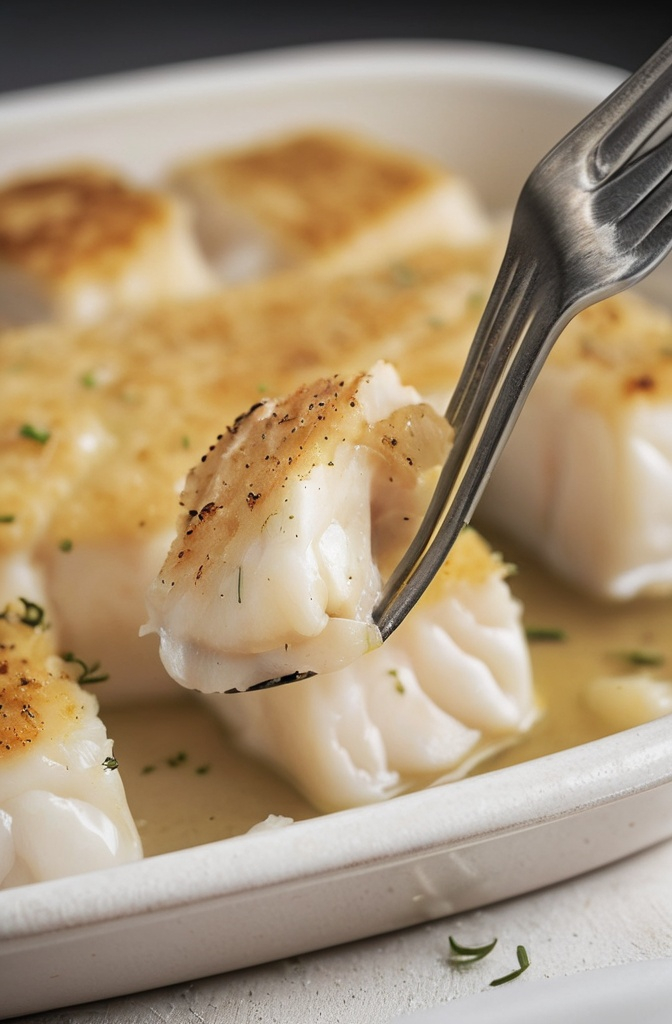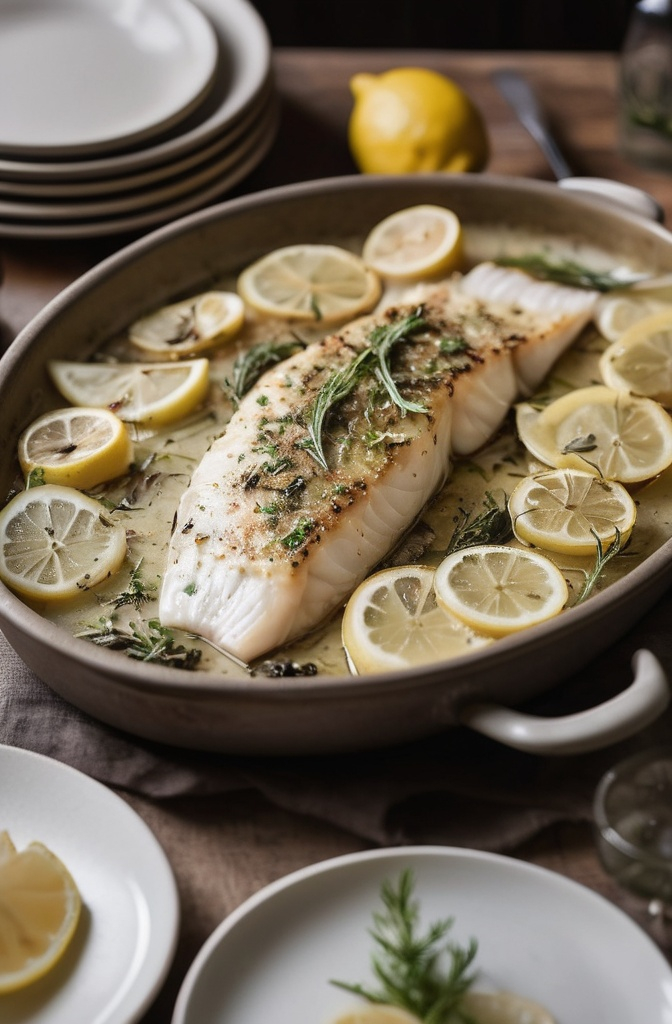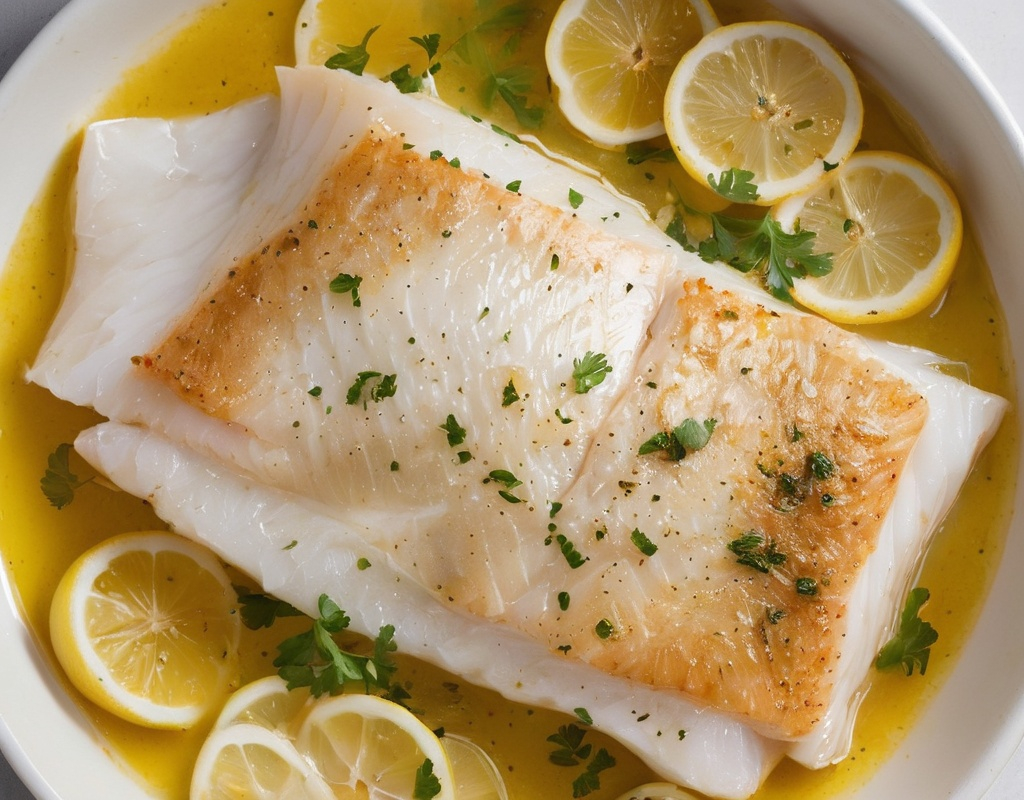You think cod is boring? Not in my kitchen. Cod, when done right, carries a kind of quiet confidence. It doesn’t shout like salmon. It doesn’t need to. Baked cod with lemon and garlic isn’t just a recipe. It’s a method, a mindset. And yeah—it’s easy, but not in that “shortcut to mediocrity” kind of way. It’s easy like a jazz riff that took twenty years to sound effortless. Let’s dig into it.
This isn’t about tossing fish into an oven and crossing your fingers. This is about technique, balance, heat, and understanding your ingredients well enough to let them speak without shouting over them.
The Quiet Hero: Cod
Cod is that old soul at the back of the room, the kind of fish that’s been feeding coastlines for centuries. It’s flaky, lean, forgiving. And unlike some of its oilier cousins (looking at you, mackerel), cod has a neutral flavor profile that welcomes subtlety.
Now, if you’re sourcing cod, get the good stuff. Atlantic cod is the gold standard, but overfishing’s been a beast. Look for certified sustainable labels, or consider Pacific cod—it’s slightly firmer but plays just as nice in the oven.
Frozen cod? Totally fine—just thaw it properly. None of that microwave nonsense. Let it sit in the fridge overnight, or, if you’re behind (we’ve all been there), gently defrost it in a bowl of cold water. Never hot water. Never.
Why Baked? Why Lemon? Why Garlic?
Baking is gentle. Cod needs that. It flakes too easily under aggressive heat. Pan-frying risks dryness unless you’re laser-focused. Grilling? Great for bolder fish. But baked cod? That’s the dinner party fish—quiet, clean, and surprisingly elegant.
Lemon is bright, acidic, cleansing. Garlic is deep, warm, earthy. Together? They’re the yin and yang of savory profiles. They don’t just add flavor—they awaken the fish.
Here’s the sciencey bit. Lemon juice slightly denatures the proteins on the fish’s surface—softens ‘em up. Garlic, especially when baked, mellows out. It won’t punch you in the nose. It’ll whisper in your ear.
Method Breakdown: The Real Technique
Forget the 2-line instructions on the back of some blog.
Preheat your oven to 400°F (204°C). That’s a sweet spot. Hot enough to bake, but not broil.
Pat the cod dry. Moisture is the enemy of browning. You want a bit of a crust? Dry that fish like it owes you rent.
Salt it generously. Not just for taste. Salt starts breaking down the proteins even before the heat hits. Give it 10 minutes to sit post-salt. Trust me.
In a small bowl:
Mix fresh minced garlic (about 2–3 cloves), zest of one lemon, 2 tbsp of extra-virgin olive oil, a bit of cracked pepper, and a whisper of smoked paprika (optional, but wow, it hits different). Spoon this mixture right over the top of the fillets.
Lay a couple lemon slices right on top. Not just for looks. As they roast, they release oils and moisture, infusing the fish.
Bake for 12–15 minutes. Don’t overthink it. The moment it flakes under gentle pressure, it’s done. Internal temp? Aim for 130°F (54°C), tops.
Let’s Talk Sides and Context
Cod on its own? Fine. But cod in context? That’s where the magic lives.
Pair it with something herby and green—think a parsley-fennel salad or steamed broccolini with a hint of anchovy vinaigrette. Something bitter or briny plays beautifully with the lemon-garlic duo.
Or, take it comfort-food classic: mashed potatoes, but with olive oil and roasted garlic instead of butter. Add capers if you dare. You should dare.

Industry Insight: Why Pros Respect Simple Dishes
There’s a running joke in pro kitchens: “You think you’re good? Cook an egg. Bake a cod fillet.”
Simple dishes expose skill. There’s nowhere to hide. If your timing’s off by two minutes? Dry fish. If your garlic’s raw or overcooked? Game over.
Many Michelin-starred restaurants run lean white fish dishes as tests. Can the new guy respect timing? Can they season with restraint? Baked cod is a gatekeeper.
A 2020 study from the Culinary Institute of America found that 63% of chefs use white fish dishes to test new hires’ ability to execute timing and temperature control. Cod, more than halibut or haddock, leads that category due to its quick cook time and textural sensitivity.
Common Mistakes and Misconceptions
Mistake #1: Overcooking. Cod is not chicken. It should just barely flake. Let carryover heat do some of the work. If it’s curling at the edges? Too far.
Mistake #2: Not drying the fish. You want flavor to cling. Wet fish = slippery flavor.
Mistake #3: Baking straight from cold. Cold fish drops your oven temp and unevenly cooks. Let it sit on the counter for 10–15 minutes before it hits the tray.
Misconception: Cod is bland. No—it’s clean. There’s a difference. Cod gives you a canvas. Don’t expect it to sing like tuna. Instead, learn to speak its language.
Trending Now: Baked Cod’s Global Glow-Up
Restaurants are catching on. Baked cod isn’t just some weekday dinner anymore. At Saison in San Francisco, they’re finishing baked cod with burnt lemon oil and fermented garlic paste. At London’s Brat? Cod’s topped with wild garlic and grilled over wood.
Cod’s even popping up in Japanese izakayas. Miso-cured, flash-baked, paired with yuzu kosho. Beautiful fusion. And very now.
TikTok’s also had its moment with cod—one viral recipe saw creators layering panko-crusted cod under a garlic-lime butter and roasting it fast at 450°F. Not quite traditional, but undeniably tasty.
Cod’s Nutritional Value: Underrated Powerhouse
Cod’s a lean fish, loaded with protein (about 20g per 100g serving) and omega-3s, albeit less than fattier fish like salmon. It’s also got selenium, B12, and iodine—key micronutrients for thyroid health.
For pros cooking for health-conscious diners, cod checks all the boxes. It’s low in calories, adaptable, and responds well to low-fat cooking methods.

Sourcing Sustainably: Because It Matters
Let’s not sugarcoat it. Atlantic cod has had a rough go of it, with stocks collapsing in the 90s. But there’s hope. Sustainable fisheries in Iceland and Norway are setting a new bar.
Look for certifications—MSC (Marine Stewardship Council) is a good one. Or buy from small local fisheries if you’ve got the access. Transparency in sourcing isn’t just ethical—it’s marketable.
Pro Tips from the Line
- Use a cast iron or heavy-duty pan for even baking. Thin trays warp. Warped trays = uneven cooking.
- Infuse the oil. Warm your olive oil with garlic and lemon zest before brushing it on. The flavor gets deeper, less sharp.
- Let it rest. Just a couple minutes. Flavors settle. The fish finishes cooking gently.
- Don’t crowd the pan. Cod releases moisture. Give it room to breathe.
Final Thoughts: Less Is More, But Only If You Do It Right
Baked cod with lemon and garlic is a flex—but only when you do it with intention. It’s not the flashy dish. It’s the quietly perfect one. The kind of plate that earns nods across a table without a word.
So whether you’re cooking for a Tuesday night or a tasting menu, remember: keep it simple, keep it smart, and let the cod do the talking. It’s been waiting for you to listen.
Go cook something clean. And do it right.
FAQs
What kind of cod is best for baking with lemon and garlic?
Atlantic cod is ideal, but sustainably sourced Pacific cod works just as well.
Can I use frozen cod for this recipe?
Yes, just thaw it properly in the fridge or cold water—never with heat.
Why do I need to pat the cod dry before baking?
Drying helps the seasoning stick and promotes better texture.
How long should I bake cod at 400°F?
About 12–15 minutes, or until it flakes easily with a fork.
What temperature should cod be cooked to?
Aim for an internal temp of 130°F (54°C) for perfect doneness.
Can I prep the lemon and garlic topping in advance?
Absolutely, just keep it refrigerated and bring to room temp before using.
Why does my cod come out dry?
It’s likely overcooked—watch closely and let carryover heat finish the job.
Can I add other herbs or spices to the recipe?
Yes, thyme, parsley, or smoked paprika all complement it beautifully.
Is this recipe healthy?
Very—cod is low-calorie, high-protein, and rich in essential nutrients.
What are good sides to serve with baked cod?
Think herby greens, mashed potatoes, or anything briny and bright.
How do I know if my cod is sustainable?
Look for labels like MSC certification or buy from reputable local sources.
Should I let the cod rest after baking?
Yes, a couple minutes helps the texture settle and flavors develop.
Can I bake cod on a foil-lined tray?
Sure, just make sure the tray is heavy enough for even cooking.
Why use lemon slices on top of the cod?
They infuse moisture and citrus oils as they roast, adding depth.

Mariana is a passionate home cook who creates delicious, easy-to-follow recipes for busy people. From energizing breakfasts to satisfying dinners and indulgent desserts, her dishes are designed to fuel both your body and hustle.
When she’s not in the kitchen, she’s exploring new flavors and dreaming up her next recipe to share with the Foodie Hustle community.

